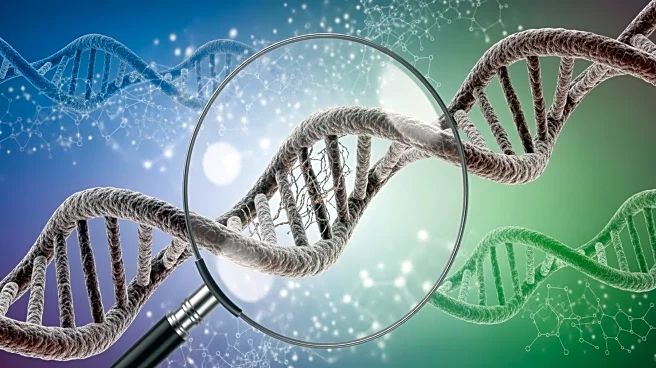What's Happening?
A comprehensive study utilizing 51,399 whole genome sequencing samples from the NHLBI TOPMed project has identified genetic determinants and genomic consequences of non-leukemogenic somatic point mutations. Researchers focused on the mutation burden associated
with chronological age, using genomic and epigenomic annotations to inform mutation rates. The study found that mutations in quiescent chromatin are more strongly associated with age than those in transcriptionally active chromatin. This suggests that chromatin state plays a significant role in mutation rates. The research also developed a probabilistic graphical model, GEM, to distinguish true somatic mutations from artifacts, enhancing the accuracy of mutation burden estimation. The study identified several genome-wide significant loci, including TERT and TCL1A, which are associated with clonal hematopoiesis.
Why It's Important?
Understanding the genetic determinants of somatic mutations and their association with aging is crucial for advancing knowledge in age-related diseases and clonal hematopoiesis. The findings could lead to improved diagnostic tools and therapeutic strategies for conditions linked to somatic mutations, such as certain cancers and hematological disorders. By identifying specific genetic loci associated with mutation burden, the study provides potential targets for genetic interventions. The development of the GEM model enhances the ability to accurately assess mutation burden, which is vital for research into aging and related diseases.
What's Next?
Future research may focus on further refining the GEM model and exploring its applications in clinical settings. The study's findings could lead to new approaches in personalized medicine, particularly in the management of age-related diseases. Researchers may also investigate the role of identified genetic loci in other clonal phenomena and their potential as therapeutic targets.
Beyond the Headlines
The study highlights the importance of chromatin state in mutation rates, suggesting that epigenomic factors could be key in understanding aging and disease progression. This could lead to a shift in focus towards epigenomic therapies in treating age-related conditions.
















